Rob Bignell's Blog, page 377
March 26, 2013
Don't burden us with a self-indulgent digression
Many writers pen stories to make a statement about an ethical or political issue. This is especially true in science fiction; the movie “Star Trek IV: The Voyage Home”, for example, is largely about the need for humanity to be better stewards of the Earth, specifically in the way we treat whales.
Unlike “The Voyage Home”, however, authors sometimes are tempted to get on their soapbox rather than allow the message to unfold with the story. When a diatribe or rant is inserted in the story, the author is guilty of a self-indulgent digression.
There are a lot of good reasons to excise this digression from your story. First, it breaks the story’s dramatic tension. You only have so many words to tell a story, and if you don’t use every one of them to move the tale forward, the risk of the reader putting the novel down or turning to another story in the magazine increases. Furthermore, the point of a fiction story is to express a message through the character’s actions, to show a position by taking us through the people’s lives as they face a moral crisis. Diatribes and rants aren’t why readers picked up your story. Finally, such digressions indicate a lack of craftsmanship on your part. Good writers don’t convince their readers to take a moral or political stance by arguing points as if they’re in a debate but instead rely on the power of storytelling.
Simply put, get rid of the rant in your story. Send a letter to the editor, go stand on a soapbox in a park or write a blog if you must write a diatribe. After all, readers picked up the publication that your story is in to read fiction not essays.
Need an editor? Having your book, business document or academic paper proofread or edited before submitting it can prove invaluable. In an economic climate where you face heavy competition, your writing needs a second eye to give you the edge. I can provide that second eye.
Related articles
 Avoid giving readers a big info dump
Avoid giving readers a big info dump Select a viewpoint that gives you flexibility
Select a viewpoint that gives you flexibility Editing client publishes science fiction story
Editing client publishes science fiction story Market your book with a free unpublished story
Market your book with a free unpublished story
March 25, 2013
Pit story's hero against society to create conflict
Rather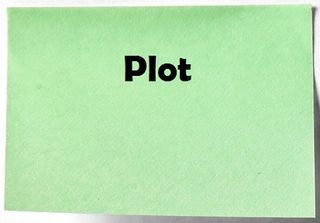 than take on another individual, the main character could find himself in conflict with an entire society. When the main character or small group of characters take on the greater culture – who usually are represented by a group of authority figures or “upstanding” citizens – the author is using a man vs. society conflict.
than take on another individual, the main character could find himself in conflict with an entire society. When the main character or small group of characters take on the greater culture – who usually are represented by a group of authority figures or “upstanding” citizens – the author is using a man vs. society conflict.
An example of this occurs in the “Star Trek: The Original Series” episode “The Apple”. When Captain Kirk and his landing party beam down to a planet with an ideal climate, they soon discover a machine mind controls the planet and that the natives worship this machine. Kirk sets out to destroy this machine, named Baal, after it attacks the Enterprise. The native aliens try to stop Kirk, however, and are disappointed when our mighty captain succeeds. Through the episode, Kirk and crew find themselves in conflict with the native’s society’s customs and beliefs.
Indeed, such a conflict is good way to show the illogic of a society’s values. The moral of “The Apple” is that intelligent beings need to be free, even if it means suffering (indeed, the planet’s inhabitants now will have to live in a harsh climate, break their backs farming by hand to feed themselves and suffer the psychological loss of faith in a god that provided for and cared for them). Of course, Baal is a false god, so a system in which intelligent beings worship and serve a false god is illogical.
Two problems can arise with man vs. society conflicts, however. First, when readers can focus on a specific individual as the antagonist, relating to and identifying with the main character can be easier. The challenge for the writer is to make the society a living being itself. Otherwise, the main character simply is defending himself against minor characters and obstacles throughout the story. Another problem is that often society is too monolithic for a single character to overcome. The story problem shouldn’t end with the collapse of society but instead the main character escaping it or achieving some success that creates a new hope for the culture’s eventual fall.
Need an editor? Having your book, business document or academic paper proofread or edited before submitting it can prove invaluable. In an economic climate where you face heavy competition, your writing needs a second eye to give you the edge. I can provide that second eye.
Related articles
 Conflict: The heart of every story
Conflict: The heart of every story Consider using man vs. nature conflict in your story
Consider using man vs. nature conflict in your story Select a viewpoint that gives you flexibility
Select a viewpoint that gives you flexibility Story more profound with man vs. himself conflict
Story more profound with man vs. himself conflict Incorporate man vs. man conflict into your story
Incorporate man vs. man conflict into your story
March 23, 2013
Five great quotations about writer's block
“You 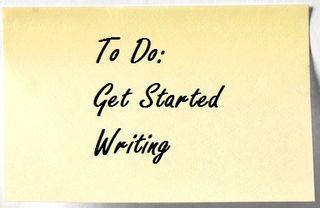 can’t think yourself out of a writing block, you have to write yourself out of a thinking block.” – John Rogers
can’t think yourself out of a writing block, you have to write yourself out of a thinking block.” – John Rogers
“There’s always something to write about. If there’s not then you need to live life more aggressively.” – Min Kim
“… everything in life is writable about if you have the outgoing guts to do it, and the imagination to improvise. The worst enemy to creativity is self-doubt. – Sylvia Plath
“The cure for writer’s cramp is writer’s block.” – Inigo DeLeon
“The pages are still blank, but there is a miraculous feeling of the words being there, written in invisible ink and clamoring to become visible.” – Vladimir Nabakov
Need an editor? Having your book, business document or academic paper proofread or edited before submitting it can prove invaluable. In an economic climate where you face heavy competition, your writing needs a second eye to give you the edge. I can provide that second eye.
Related articles
 Five great quotations about novel writing
Five great quotations about novel writing Five Great Quotations for Aspiring Writers
Five Great Quotations for Aspiring Writers Five Great Quotations about the Business of Writing
Five Great Quotations about the Business of Writing Five great quotations about writing style
Five great quotations about writing style Five great quotations about book critics
Five great quotations about book critics
March 22, 2013
Entice readers with excerpt from next book
If you’ve  already started writing the next book you plan to publish, the back of the one you’re about to release is a great place to promote it. You might do that by offering readers an excerpt of your next book. This is particularly popular among novelists.
already started writing the next book you plan to publish, the back of the one you’re about to release is a great place to promote it. You might do that by offering readers an excerpt of your next book. This is particularly popular among novelists.
Before doing that, however, you should be absolutely sure that the excerpt really will be from your next book. You don’t want to tease readers then decide not to publish the book or instead publish a different one. That only will confuse or disappoint them.
The excerpt should be powerful and compelling writing, a passage that really hooks readers. Chapter 1 usually makes a good excerpt. Whatever section you excerpt, though, make sure it can be read as a self-contained piece, with no extra explanation, and that it ends with an intriguing problem to be resolved.
No more than 10 or so pages need be given as an excerpt. Ideally, you wouldn’t want to give more than five or six pages. After all, the idea is to get the reader so excited about the story that they want to keep reading it once they’ve reached the excerpt’s end.
The text need not look any different, in terms of typeface or point size than the rest of the book. Some authors have placed their excerpts entirely in italics, but studies suggest that a large chunk of italicized print is difficult to read, so that probably is not advisable.
Be sure to clearly mark at the passage’s beginning that what readers are about to cast eyes upon is an excerpt from your next book. Give the book’s title and projected release date by month and year. For example, you might write “The following is an excerpt from (your name)’s next novel, ‘Title,’ due out July 2016.”
Need an editor? Having your book, business document or academic paper proofread or edited before submitting it can prove invaluable. In an economic climate where you face heavy competition, your writing needs a second eye to give you the edge. I can provide that second eye.
Related articles
 Promote book with Goodreads author's page
Promote book with Goodreads author's page Why you want reviews written about your book
Why you want reviews written about your book Market your book with endorsements
Market your book with endorsements Write a winning blurb for your book's back cover
Write a winning blurb for your book's back cover
March 21, 2013
Is your book ready to be self-published?
Before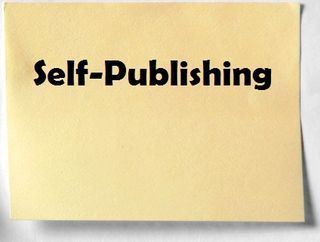 making coffee in the morning, you’ve got to have grounds to put in the pot. Before grilling a steak for dinner, you need to have a thawed T-bone. Before self-publishing, you’ve got to have a completed manuscript.
making coffee in the morning, you’ve got to have grounds to put in the pot. Before grilling a steak for dinner, you need to have a thawed T-bone. Before self-publishing, you’ve got to have a completed manuscript.
If you haven’t yet finished writing your novel, anthology or nonfiction book, stop reading now. Bookmark this page and come back once you’ve completed writing it. We’ll see in a few days!
If you’ve finished writing your manuscript, congratulations (and welcome back all of you who stopped reading this book a few days ago and have just finished writing your book)! Now the bad news: A completed manuscript doesn’t just mean that you’ve got a book ready to be self-published. There’s a lot more to it than that.
First, the manuscript ought to be professionally proofread and edited. Even the best writers need someone looking over their work to find stray typos and to ensure that the sentences and the book’s organization makes sense (Full disclosure here: I run such an editing service.). Writers often get so close to their work that they don’t realize they’ve made some oversight or that they’re rambling in a section. A good editor will advise you of this and help you determine a solution to many other problems, from plotting to logically organizing your ideas.
Secondly, you must have ready all of the sections of the book that you need before uploading it to a self-publishing site. Among those often overlooked sections are:
n Cover page – Also known in the industry as the half title page, this is the page that readers first open to and see the book’s title in large letters as well as the author’s name and publisher.
n Title page – Turn a page and you’ll find in small print the book’s copyright, information about the publisher, the book’s ISBN and probably a notice saying parts of the book can’t be reproduced without permission or that the characters in it are wholly fictional.
n Acknowledgements and dedication – The next couple of pages probably give a list of people who the author is appreciative to for help in writing this book (aka “acknowledgements”) and a person or two who the book is written in honor of (aka “dedication”).
n Table of contents – A few more pages list all of the section and chapter titles in the book and on what pages they appear (or in the case of ebooks, links to those sections and chapters). A novel probably doesn’t need a table of contents, but a nonfiction book absolutely does.
n Index – After the book’s main text comes a few pages listing key words and concepts and what pages they appeared on in the book. As with the table of contents, an index isn’t needed in a novel, but a nonfiction book demands it.
n Author’s bio – While not necessary, many readers like to know a little about who wrote the book: what makes them an expert on the subject, if they’ve published other books, where they live, etc.
Don’t worry if these pages aren’t yet ready to go; in upcoming entries we’ll discuss what needs to go on each page.
Finally, your manuscript needs to be formatted. That means it appears on your computer screen exactly as it will be printed. That involves fitting the text within the margins of the book’s trim size (the book’s dimensions), that the text is in the correct typeface and point size, and that the page numbers are included, and more. We’ll also discuss formatting the book in upcoming entries.
Completing all of this is essential before starting to upload your manuscript to a self-publishing house. If it’s not done, your book either will look unprofessional or you run the risk of spending money to resubmit your manuscript because you must go back and complete all of this work.
As novelist Steven S. Sharp, author of “Life’s Hurdles & The True Winner”, advises, “Get your story written, and have fun with it before you delve too far into the business side of things. It can be distracting.”
Need an editor? Having your book, business document or academic paper proofread or edited before submitting it can prove invaluable. In an economic climate where you face heavy competition, your writing needs a second eye to give you the edge. I can provide that second eye.
Related articles
 Write a winning blurb for your book's back cover
Write a winning blurb for your book's back cover Promote book with Goodreads author's page
Promote book with Goodreads author's page
March 20, 2013
Don't trust spellcheck, a junior high-aged editor
So you’ve got your story typed in manuscript form and are about to send it out. You decide to do one more spell check before printing the final copy. Good idea, right?
Wrong.
If you don’t feel confident that your manuscript is as perfect as can be, you should print it and make one more read of it. Don’t leave your manuscript’s quality up to the computer spell check.
Instead, learn to distrust the spell check.
Spell checks certainly are improving, and the dynamic spell check on current word processing programs are excellent tools. A spell check, however, should not be the sole method you use to edit your manuscript.
Here are some common problems with spell check:
n Homonyms - These are words that sound the same but are spelled differently, such as there, their and they’re. The different spellings have different meanings, and spell checks often can’t tell the difference.
n Machine gun checking - Because spell checks have limited dictionaries, they tend to flag words that are spelled correctly. Writers often fire rapidly through these words. The result is that some misspelled words are missed.
n Misspelled words can pass - If you misspell a word in such a way that it becomes two correctly spelled words, such as “miss steaks” when you meant “mistakes”, or simply mistype one letter so that it becomes a new word, such as “advise” when you meant “advice”, the spell check won’t catch it.
This is not to say you shouldn’t use your spell check. It is like having a second pair of eyes on your story. But the brain behind those eyes isn’t particularly smart. You wouldn’t be satisfied with letting a junior high student be the only one to edit your manuscript - so why would you put all of your faith in a spell check?
Need an editor? Having your book, business document or academic paper proofread or edited before submitting it can prove invaluable. In an economic climate where you face heavy competition, your writing needs a second eye to give you the edge. I can provide that second eye.
Related articles
 Always review proof your book before okaying it
Always review proof your book before okaying it Some guidelines for reviewing a book
Some guidelines for reviewing a book
March 19, 2013
Add reaction shots to heighten dramatic tension
Description in your stories shouldn’t be limited to landscapes and introductions of characters. While most description in a story will be devoted to those purposes, there are other times when a single phrase or line of description can be inserted amid action and dialogue with great effectiveness.
One such insertion is known as a “reaction shot.” A term commonly used in science fiction workshops and critiques, a reaction shot is a cut away from the narrative to show a character’s emotional response. Consider this example from Benjamin Rosenbaum and David Ackert’s short story “Stray”:
“You smoke?”
Ivan blinked up at him. What was this? “I have,” he said.
The description of Ivan blinking up at the speaker is an example of a reaction shot. It provides insight into Ian’s character by showing his surprise that another would treat him in a friendly manner.
Such cutaways are natural to readers of today, primarily because we see it all the time in movies and television programs. Indeed, the term comes from the filming industry.
When utilizing a reaction shot, be sure to follow a couple of guidelines. First, the character cut away to is the main character. It’s his emotional responses and insights into his personality that most interest readers. Secondly, don’t cut away to an obvious emotional reaction, such as laughing at a joke. If you do, you risk slowing the story. Be selective with reaction shots, using them to further the dramatic tension.
Need an editor? Having your book, business document or academic paper proofread or edited before submitting it can prove invaluable. In an economic climate where you face heavy competition, your writing needs a second eye to give you the edge. I can provide that second eye.
Related articles
 Editing client publishes science fiction story
Editing client publishes science fiction story Avoid exposition (Show, don't tell!)
Avoid exposition (Show, don't tell!) Select a viewpoint that gives you flexibility
Select a viewpoint that gives you flexibility How to get rid of info dumps in your story
How to get rid of info dumps in your story
March 18, 2013
Start story with event that upsets status quo
Often 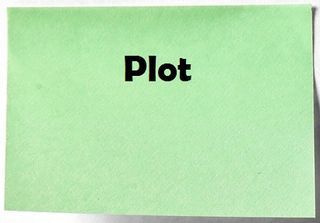 the opening of a story involves some incident that upsets the status quo. In doing so, the main character faces the challenge of restoring order in the world.
the opening of a story involves some incident that upsets the status quo. In doing so, the main character faces the challenge of restoring order in the world.
This incident is known as an “out-of-whack event,” which is “when the story concerns a character who stable life is knocked out of whack by an external event,” as the Science Fiction and Fantasy Writers of America, Inc., defines it.
Consider this example of a story opener that employs an out-of-whack event:
Peter Hanswurst sniffed indignantly. A gray circle of withered plants lay in the middle of his field, an otherwise perfect patch of green soybeans alternating with black dirt that ran into the horizon. The hot Midwestern sun beat down on him, and he wiped sweat from his forehead. Hanswurst figured the circle was no more six feet across, a miniscule fraction of the entire field, and one he decided that was small enough to eradicate.
In this story, farmer Peter Hanswurst finds his world out-of-whack: a strange circle of dead plants sits in the middle of his otherwise perfect field. He now will spend the story trying to rid the field of the circle – and face a number of obstacles in doing so.
Starting a story with an out-of-whack event is a time-honored tradition in Western storytelling. Indeed, Aristotle touted it.
Usually the out-of-whack event happens at the story’s beginning. Sometimes it even occurs before the story begins, as the tale starts with the main character already engaged in the struggle to get his life back in order. If the excerpt above started with Peter Hanswurst plowing under the dead plants in the gray circle, the out-of-whack event would have occurred before the story began.
If using an out-of-whack event, don’t wait too long to introduce the incident. If you do, you risk having the story move too slowly and missing out on a great opportunity for a narrative hook.
Need an editor? Having your book, business document or academic paper proofread or edited before submitting it can prove invaluable. In an economic climate where you face heavy competition, your writing needs a second eye to give you the edge. I can provide that second eye.
Related articles
 How to form your story's basic structure
How to form your story's basic structure Select a viewpoint that gives you flexibility
Select a viewpoint that gives you flexibility
March 17, 2013
Should you use a pen name for your book?
Your name 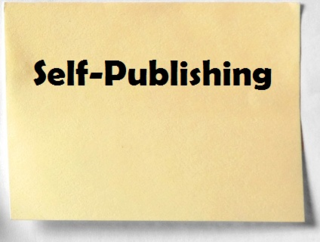 will appear all over your book – the cover, the title pages, the preface, the author’s bio, probably on a at least half of the book’s main text. So before you actually start putting the book together, you might want consider taking up a pen name.
will appear all over your book – the cover, the title pages, the preface, the author’s bio, probably on a at least half of the book’s main text. So before you actually start putting the book together, you might want consider taking up a pen name.
There are several advantages and disadvantages of having a pen name.
Among the advantages are:
g Cooler, catchier name than your own – If your name is difficult to remember or spell or if it sounds silly or obscene, then a pen name might be right for you.
g Your name already is in use – Perhaps someone famous already has the same name (or a similar sounding one) as you. To create your own identity, you’ll want to come up with you own name.
g Allows you to write books you wouldn’t normally be associated with – For example, romance books sell better if written by a female, and the same is true of westerns written by men. That doesn’t mean a man can’t write a good romance or that a woman can’t pen a great western, but there does seem to be a bias among readers.
g Branding – If you plan to write a series of books about outdoors activities and also publish mystery novels, selecting a pen name for one of the series will help create a more unique sense of who you are as a writer.
g Conceal your identity for business purposes – Say you’ve created your own publishing company but also are an author (er, the only author?) that this company publishes. This can make getting publicity difficult.
g Privacy – You may simply have no desire for people to know who you are as you despise being bothered by the press and nosy family members who think you’re now rich that you’ve published a book.
Likewise, there are several disadvantages to a pen name:
g Nobody knows you are – You wanted to be famous author, right? Most people at your high school class reunion won’t realize that you’ve succeeded if you’re using a pen name (I know, this is vanity).
g No credit for what you’ve written – Readers and critics alike typically won’t recognize you for the breadth of your talent if you publish some of your books under a pen name.
Need an editor? Having your book, business document or academic paper proofread or edited before submitting it can prove invaluable. In an economic climate where you face heavy competition, your writing needs a second eye to give you the edge. I can provide that second eye.
Related articles
 Is your book ready to be self-published?
Is your book ready to be self-published? How to purchase an ISBN for your book
How to purchase an ISBN for your book '7 Minutes a Day' now available in paperback!
'7 Minutes a Day' now available in paperback! What authors can write for blog entries
What authors can write for blog entries
Don’t let ergonomics issues stop your writing
You always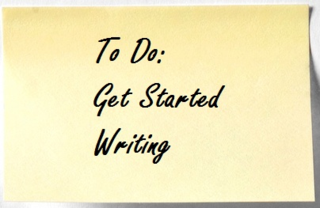 have great book ideas, but whenever you sit to type, you just can’t get comfortable enough for the words to come out. In a short while, your eyes are burning and your wrists aching. You’re wondering if you’re really cut out to be an author, even though you enjoy writing a lot.
have great book ideas, but whenever you sit to type, you just can’t get comfortable enough for the words to come out. In a short while, your eyes are burning and your wrists aching. You’re wondering if you’re really cut out to be an author, even though you enjoy writing a lot.
The problem probably has little to do with your love of or skill for writing but with ergonomics issues.
The human body really isn’t meant to perform for hours on end some of the tasks that our modern writing and office equipment demand of it. All too often our necks cramp from looking at computer screens at slanted angles, our eyes burn from staring too long at a fixed distance (a computer monitor), and our fingers turn numb from the strain of our wrists performing repetitive motions.
If you’ve spent all day working in an office under such conditions, the last thing your body wants to do once you’re home at night or for the weekend is to keep it up.
To address ergonomics issues, listen to your body. If your wrists or back feel stressed when writing, you may need to “revise” your writing area. Sometimes you simply need to raise or lower your chair to avoid typing at odd angles or to adjust the computer monitor to eliminate glare. You may need to add lighting to prevent eye strain.
In addition, always sit up straight when typing and take frequent breaks if using a computer. If your body still feels stressed, consider writing like during the days of old with a pen and notebook. While you’ll ultimately want to get your writing typed and saved, at least when you have good ideas you can continue to pursue them.
Need an editor? Having your book, business document or academic paper proofread or edited before submitting it can prove invaluable. In an economic climate where you face heavy competition, your writing needs a second eye to give you the edge. I can provide that second eye.
Related articles
 Five quotations about writing as self-discovery
Five quotations about writing as self-discovery Five great quotations about writing
Five great quotations about writing '7 Minutes a Day' now available in paperback!
'7 Minutes a Day' now available in paperback!



